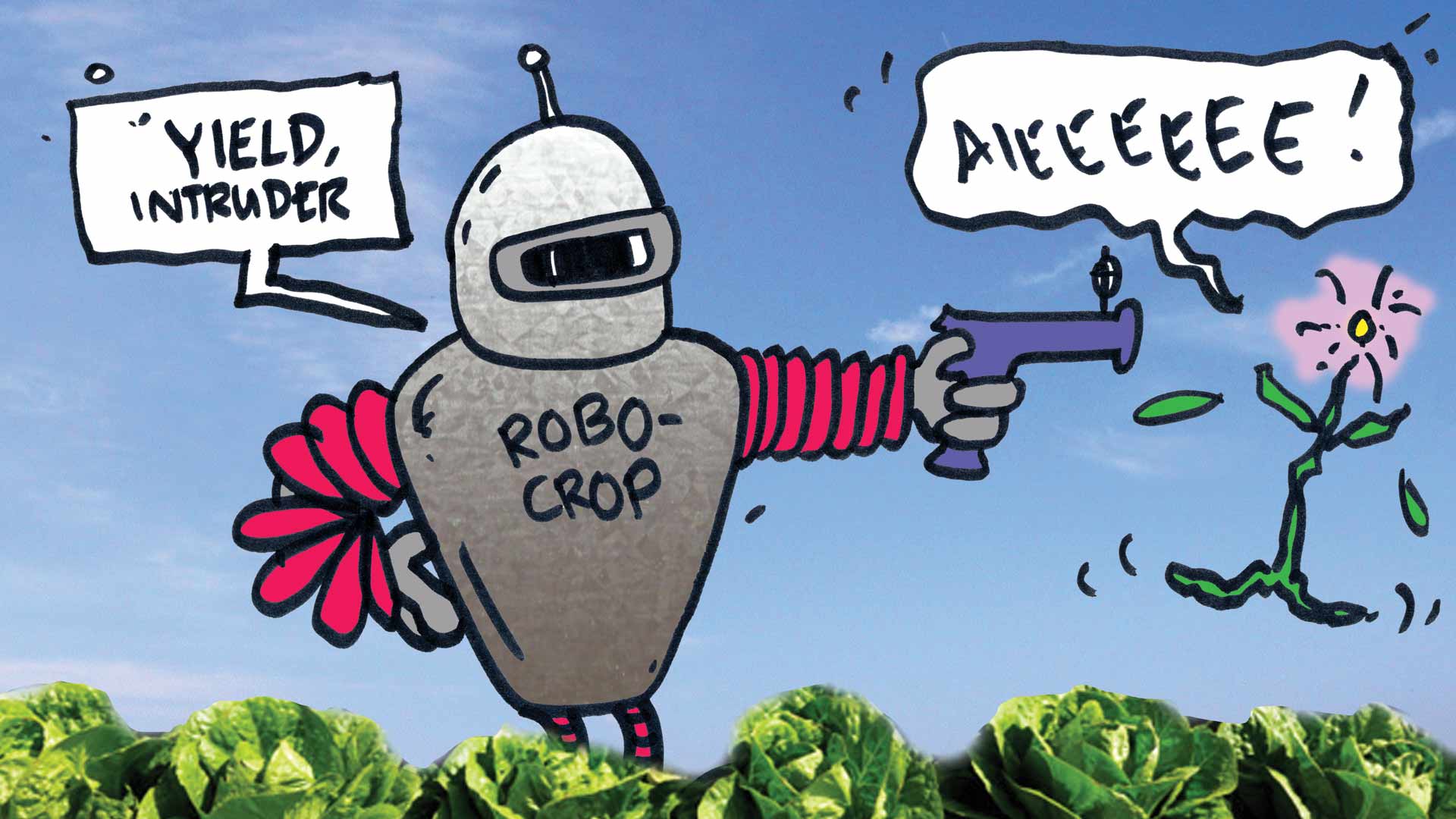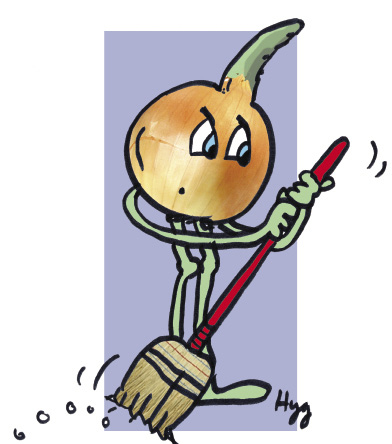–by Ashley Harguth
cartoons by Uncle Hyggly
Editor’s note: As a service to our readers, we provide news about the work of others in ag utilization. Often, research done elsewhere complements AURI’s work.
Weeding robots
Stanford trained engineers have developed a “Lettuce Bot,” a machine for thinning lettuce. The machine is pulled behind a tractor and uses computer vision and robotics to pull weeds from rows of lettuce. Pictures are taken of the passing plants, and the machine compares them to a database of more than a million images of plants from various angles. If plants are identified as being too close together, they receive concentrated fertilizer, which kills the unwanted seedling and at the same time provides nutrients to the remaining plants.
This machine could be transformed into an alternative for weed control in row crops in the Midwest, when a weed is detected a system with something like rotary blades would take out the weed.
Corn and Soybean Digest, Jan 2013
Beet pulp plastic
Sugar beet pulp, leftover residue from sugar extraction has long been studied by the Agricultural Research Service. Researchers there, along with Washington State University, have developed a biodegradable thermoplastic from this pulp.
The packaging is made from sugar beet pulp and polylactic acid (PLA). PLA is derived from sugars in plants like corn, sugar beet, switchgrass, sugarcane and other plants. The research showed that up to 50 percent of the sugar beet pulp can be incorporated with PLA into the plastic. This packaging is comparable to white, spongy food packages.
Sugar beet pulp could also be processed with water and/or glycerol to create a material like opaque plastic containers, bags and film coverings.
USDA-ARS, Jan 2013
Making more ethanol
A California company has created a “vitamin” shot for the ethanol industry. Novozymes announced a new product that will help ethanol producers get an extra 2.5 percent of ethanol out of the same amount of corn. This product is used after the corn meal is made into a mash, and enzymes convert the starch in the mash to sugar, which is then fermented to ethanol. With the new product, a plant that typically uses 900,000 tons of corn could save 22,500 tons of corn while still producing the same amount of ethanol.
Biofuelsdigest.com, Oct 2012
 Lower blood pressure from beet juice
Lower blood pressure from beet juice
Drinking a glass of beet juice may lower blood pressure, according to a study published in Nutrition Journal. While other studies had been done on beet juice, and it was found to lower blood pressure, this was the first study to look at its effects without making other diet or lifestyle changes. The researchers speculate it is the nitrates in the juice; nitrates are converted to nitric oxide in the body, which relaxes blood vessels and dilates them, helping the blood flow and lowering blood pressure.
Nutrition Journal, Dec 2012
Onion and garlic leftovers from the food industry may no longer be just waste. Research, done by GGS Indraprastha University in India, stated in the International Journal of Environment and Pollution that these leftovers could be used to absorb hazardous heavy metals such as arsenic, cadmium, iron, lead, mercury and tin.
The research looked at the influence of contact time, temperature, acidity or alkalinity and concentration of the various metals for industrial-scale decontamination. The most effective use was the removal of lead.
The absorbed metals can be released into a collecting container using nitric acid, and the biomass can be reused. These findings create an opportunity for food manufactures to create value from the waste
they generate.
Foodproductiondaily.com, Dec 2012

